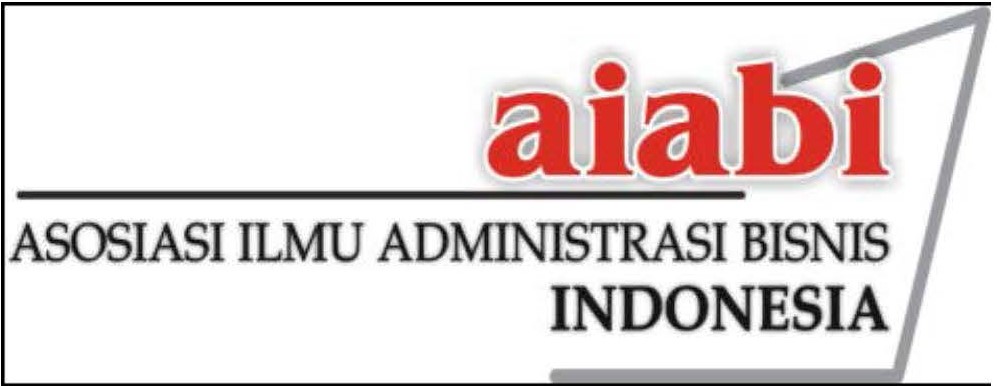TINJAUAN DIGITAL COLLABORATION NETWORK PADA START-UP DIGITAL DI PROVINSI JAWA BARAT: SEBUAH PENDEKATAN TRIPLE HELIX
Abstrak
The digital era has triggered a new technological revolution, affect significant structural changes in the industry, and ushered in the era of start-up businesses. Start-ups encounter a number of challenges, including the demand for greater digital capabilities, a weak supporting ecosystem, and difficulty accessing funding. This study aims to use a start-up relationship pattern approach with universities and the government to get an overview of the current situation and digital collaboration models for start-ups in West Java. Based on the co-inform dimension, digital start-ups in West Java have formed partnerships with other industry players and government. Only a few start-ups have undergone education and training efforts in co-learn settings. According to the co-market dimension, collaborative efforts between digital start-ups and other players in the digital innovation ecosystem have been made to promote goods or services at start-ups in West Java. Co-operation, co-produce, and co-build have yet to run optimally. The government, academics, and start-up actors have collaborated through digital collaboration networks at Digital Start-ups in West Java. However, this effort unsuccessful yet. Because each program's sustainability process could be improved, planning is necessary to create an organised, integrated, directed, and sustainable activity programme.
Era digital telah memicu revolusi teknologi baru, menyebabkan perubahan struktural yang signifikan dalam industri, dan mengantarkan era start-up. Start-up memiliki berbagai kesulitan, termasuk kebutuhan akan keterampilan digital yang lebih banyak, ekosistem pendukung yang lemah, dan kesulitan mengakses pendanaan. Penelitian ini bertujuan untuk menggunakan pendekatan pola hubungan start-up dengan perguruan tinggi dan pemerintah untuk mendapatkan gambaran tentang keadaan saat ini dan model kolaborasi digital untuk start-up di Jawa Barat. Berdasarkan dimensi co-inform, start-up digital di Jawa Barat telah menjalin kemitraan dengan pelaku industri lainnya dan dengan lembaga resmi seperti organisasi pemerintah. Hanya beberapa start-up yang telah mengikuti upaya pendidikan dan pelatihan dalam pengaturan co-learn. Menurut dimensi co-market, upaya kolaborasi antara start-up digital dan pemain lain dalam ekosistem inovasi digital sudah dilakukan untuk mempromosikan barang atau jasa pada start-up di Jawa Barat. Co-operation, co-produce, dan co-build belum berjalan optimal. Pemerintah, akademisi, dan pelaku start-up telah berkolaborasi melalui digital collaboration network pada Digital Start-ups di Jawa Barat. Namun, upaya ini masih belum berhasil. Perencanaan diperlukan untuk menyusun program kegiatan yang terorganisir, terpadu, terarah, dan berkelanjutan karena proses keberlanjutan setiap program masih perlu ditingkatkan.
Kata Kunci
Teks Lengkap:
PDFReferensi
Albert, S., Flournoy, D., & Lebrasseur, R. (2010). Networked Communities: Strategies for Digital Collaboration. In Online Information Review (Vol. 34, Issue 1). Information Science Reference. https://doi.org/10.1108/14684521011024218
Amit, R., & Han, X. (2017). Value creation through novel resource configurations in a digitally enabled world: Strategic Entrepreneurship Journal, 11(3), 228–242. https://doi.org/10.1111/sej.1256
Beliaeva, T., Ferasso, M., Kraus, S., & Damke, E. J. (2020). Dynamics of digital entrepreneurship and the innovation ecosystem: A multilevel perspective. International Journal of Entrepreneurial Behaviour and Research, 26(2), 266–284. https://doi.org/10.1108/IJEBR-06-2019-0397
Blank, S. G., & Dorf, B. (2020). The Startup Owner’s Manual Vol. 1 The Step-by-Step Guide for Building a Great Company (Vol. 1).
Braun, P. (2003). Virtual SME Networks : Pathways towards Online Collaboration. Journal of New Business Ideas and Trends, 1(2), 1–9.
Brunetto, Y., & Wharton, R. F. (2007). The Moderating Role ofTrust in SMEOwner/Managers’ Decision-Making about Collaboration. Journal OfSmall Business Management, 45(3), 362–387. https://doi.org/10.1108/00070701111116446
Burhan, F. A. (2021, March 23). 4 Tantangan Pemerataan Daya Saing Digital Antarprovinsi di Indonesia. Https://Katadata.Co.Id/Desysetyowati/Digital/60598d0aa56b3/4-Tantangan- Pemerataan-Daya-Saing-Digital-Antarprovinsi-Di-Indonesia.
Carayannis, E. G., Barth, T. D., & Campbell, D. F. (2012). The Quintuple Helix innovation model: global warming as a challenge and driver for innovation. Journal of Innovation and Entrepreneurship, 1(1), 2. https://doi.org/10.1186/2192-5372-1-2
Casals, F. E. (2010). The SME co-operation framework: A multi-method secondary research approach to SME collaboration. 2010 International Conference on E-Business, Management and Economics (IPEDR), 3, 118–124.
Davidson, E., & Vaast, E. (2010). Digital entrepreneurship and its sociomaterial enactment. Proceedings of the Annual Hawaii International Conference on System Sciences. https://doi.org/10.1109/HICSS.2010.150
Deng, X., Liu, Y., & Xiong, Y. (2020). Analysis on the development of digital economy in Guangdong Province based on improved entropy method and multivariate statistical analysis. Entropy, 22(12), 1–21. https://doi.org/10.3390/e22121441
Drucker, F. P. (2014). Innovation and Entrepreneurship Practice and Principles.
Etzkowitz, H. (2003). Innovation in innovation: The Triple Helix of university-industry-government relations. In Social Science Information (Vol. 42, Issue 3, pp. 293–337). https://doi.org/10.1177/05390184030423002
Etzkowitz, H., & Leydesdorff, L. (2000). The dynamics of innovation: From National Systems and “mode 2” to a Triple Helix of university-industry-government relations. Research Policy, 29(2), 109–123. https://doi.org/10.1016/S0048-7333(99)00055-4
Fachrunnisa, O. (2016). Membangun Kolaborasi Digital: Strategi Peningkatan Daya Saing UKM. Fakultas Ekonomi Unissula.
Fachrunnisa, O., Mutamimah, & Gunawan. (2013). Digital collaboration network for SMEs: Awareness of ICT and perceived outcome. Proceedings - 2013 7th International Conference on Complex, Intelligent, and Software Intensive Systems, CISIS 2013, 40–46. https://doi.org/10.1109/CISIS.2013.17
Ferasso, M., Guilherme, R., Missen, J., Alberto, J., Saldanha, V., Ferasso, M., & Saldanha, J. A. v. (2011). Entrepreneurship as way to contain the population exodus: a local development proposal. In Int. J. Entrepreneurship and Small Business (Vol. 14, Issue 2).
George, G., & Bock, A. J. J. (2011). The Business Model in Practice and its Implications for Entrepreneurship Research. SSRN Electronic Journal. https://doi.org/10.2139/ssrn.1490251
Guo, H., Guo, A., & Ma, H. (2022). Inside the black box: How business model innovation contributes to digital start-up performance. Journal of Innovation and Knowledge, 7(2). https://doi.org/10.1016/j.jik.2022.100188
Haefliger, S., Jäger, P., & von Krogh, G. (2010). Under the radar: Industry entry by user entrepreneurs. Research Policy, 39(9), 1198–1213. https://doi.org/10.1016/j.respol.2010.07.001
Hoyer, V. (2007). Collaborative e-Business process modelling: A holistic analysis framework focused on small and medium-sized enterprises. In Lecture Notes in Computer Science (including subseries Lecture Notes in Artificial Intelligence and Lecture Notes in Bioinformatics). https://doi.org/10.1007/978-3-540-72035-5_4
Ireland, R. D., Hitt, M. A., & Sirmon, D. G. (2003). A Model of Strategic Entrepreneurship: The Construct and its Dimensions. Journal of Management, 29(6), 963–989. https://doi.org/10.1016/s0149-2063_03_00086-2
John-Steiner, V., Weber, R. J., & Minnis, M. (1998). The Challenge of Studying Collaboration. American Educational Research Journal, 35(4), 773. https://doi.org/10.2307/1163466
Karimi, J., & Walter, Z. (2016). Corporate Entrepreneurship, Disruptive Business Model Innovation Adoption, and Its Performance: The Case of the Newspaper Industry. Long Range Planning, 49(3), 342–360. https://doi.org/10.1016/j.lrp.2015.09.004
Kohli, R., & Melville, N. P. (2019). Digital innovation: A review and synthesis. Information Systems Journal, 29(1), 200–223. https://doi.org/10.1111/isj.12193
Leong, C. M., Pan, S. L., & Liu, J. (2016). Digital entrepreneurship of born digital and grown digital firms: comparing the effectuation process of Yihaodian and Suning. Thirty Seventh International Conference on Information Systems, 1–11.
Leydesdorff, L., & Meyer, M. (2003). The Triple Helix of university-industry-government relations. In Scientometrics (Vol. 58, Issue 2, pp. 191–203). Springer Netherlands. https://doi.org/10.1023/A:1026276308287
Mesquita, L. F., & Lazzarini, S. G. (2008). New Frontiers in Entrepreneurship. Academy of Management Journal, 51(2), 359–380. https://doi.org/10.1007/978-1-4419-0058-6
Miah, M., & Omar, A. (2012). Technology Advancement in developing countries during Digital Age. International Journal of Science and Applied Information Technology, 1(1), 30–38. www.warse.ijatcse.current
Montiel-Overall, P., & John-Steiner, V. (2005). Toward a Theory of Collaboration for Teachers and Librarians. Research Journal of the American Association of School Librarians, 8, 1–31.
Nambisan, S. (2017). Digital Entrepreneurship: Toward a Digital Technology Perspective of Entrepreneurship. Entrepreneurship: Theory and Practice, 41(6), 1029–1055. https://doi.org/10.1111/etap.12254
Nurcahyo, R., Akbar, M. I., & Gabriel, D. S. (2018). Characteristics of startup company and its strategy: Analysis of Indonesia fashion startup companies. International Journal of Engineering and Technology(UAE), 7(2), 44–47. https://doi.org/10.14419/ijet.v7i2.34.13908
Nurhanisah, Y. (2021). Startup Indonesia: Skala Usaha dan Masalah yang Dihadapi. Https://Indonesiabaik.Id/Infografis/Startup-Indonesia-Skala-Usaha-Dan-Masalah-Yang-Dihadapi.
Pappas, M., Karabatsou, V., Mavrikios, D., & Chryssolouris, G. (2006). Development of a web-based collaboration platform for manufacturing product and process design evaluation using virtual reality techniques. International Journal of Computer Integrated Manufacturing, 19(8), 805–814. https://doi.org/10.1080/09511920600690426
Prastya Nugraha, A. E., & Wahyuhastuti, N. (2017). START UP DIGITAL BUSINESS: SEBAGAI SOLUSI PENGGERAK WIRAUSAHA MUDA. JURNAL NUSANTARA APLIKASI MANAJEMEN BISNIS, 2(1), 1. https://doi.org/10.29407/nusamba.v2i1.701
Purbasari, R., Muttaqin, Z., & Silvya Sari, D. (2020). The Roles of Actors in the Product Innovation Process in the Entrepreneurial Ecosystem: A to F Theory. Review of Integrative Business and Economics Research, 9(4), 278–294.
Richter, N., Jackson, P., & Schildhauer, T. (2018). Entrepreneurial innovation and leadership: preparing for a digital future. Springer.
Ries, E. (2001). The Startup Way. Currency.
Ripsas, S., & Troger, S. (2014). Deutscher Startup Monitor 2014. KPMG Deutschland.
Rizaty, M. A. (2021, March 19). Jawa Barat Miliki Pekerja Sektor Komunikasi Terbesar di Indonesia. Https://Databoks.Katadata.Co.Id/Datapublish/2021/03/19/Jawa-Barat-Miliki- Pekerja- Sektor-Komunikasi- Terbesar-Di-Indonesia.
Schrage, M. (1990). Shared Minds: The New Technologies of Collaboration.
Smith, H. L., & Bagchi-Sen, S. (2010). Triple helix and regional development: A perspective from Oxfordshire in the UK. Technology Analysis and Strategic Management, 22(7), 805–818. https://doi.org/10.1080/09537325.2010.511143
Soluk, J., Miroshnychenko, I., Kammerlander, N., & de Massis, A. (2021). Family Influence and Digital Business Model Innovation: The Enabling Role of Dynamic Capabilities. Entrepreneurship Theory and Practice, 00(0), 1–39.
Sorescu, A. (2017). Data-Driven Business Model Innovation. Journal of Product Innovation Management, 34(5), 691–696. https://doi.org/10.1111/jpim.12398
Startup Studio Indonesia. (2021, August 16). Soal Pemerataan yang Masih Jadi Permasalahan Startup di Indonesia. Https://Startupstudio.Id/Permasalahan-Startup-Indonesia/.
Sussan, F., & Acs, Z. J. (2017). The digital entrepreneurial ecosystem. Small Business Economics, 49(1), 55–73. https://doi.org/10.1007/s11187-017-9867-5
Suwandi, I., Raharja, S. J., & Purnomo, M. (2021). Anteseden Intensi Entrepreneurial Digital pada Mahasiswa Universitas Padjadjaran pada Masa Covid-19. AdBispreneur, 5(3), 333. https://doi.org/10.24198/adbispreneur.v5i3.31162
Waits, M. J. (2000). The added value of the industry cluster approach to economic analysis, strategy development, and service delivery. Economic Development Quarterly, 14(1), 35–50. https://doi.org/10.1177/089124240001400106
Zhao, F., & Collier, A. (2016). Digital Entrepreneurship: Research and Practice. 9th Annual Conference of the EuroMed Academy of Business, 2173–2182. https://www.researchgate.net/publication/309242001
Zhuang, T., Zhao, S., Zheng, M., & Chu, J. (2021). Triple helix relationship research on China’s regional university–industry–government collaborative innovation: Based on provincial patent data. Growth and Change, 52(3), 1361–1386. https://doi.org/10.1111/grow.12490
Zott, C., & Amit, R. (2007). Business model design and the performance of entrepreneurial firms. Organization Science, 18(2), 181–199. https://doi.org/10.1287/orsc.1060.0232
DOI: https://doi.org/10.24198/adbispreneur.v8i2.45629
Refbacks
- Saat ini tidak ada refbacks.









